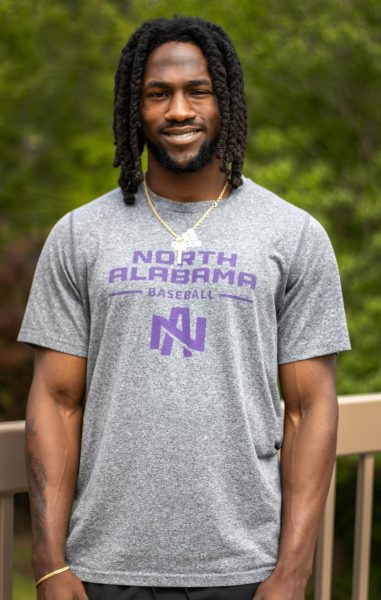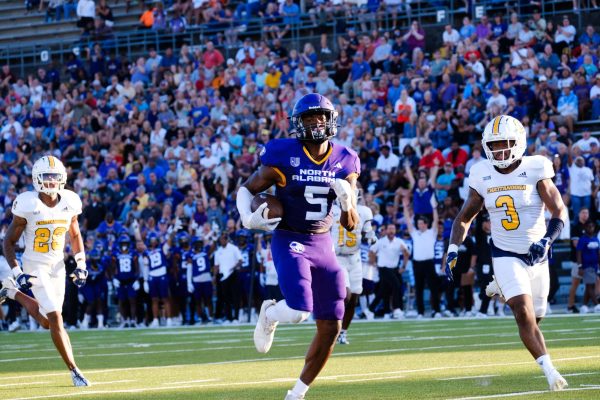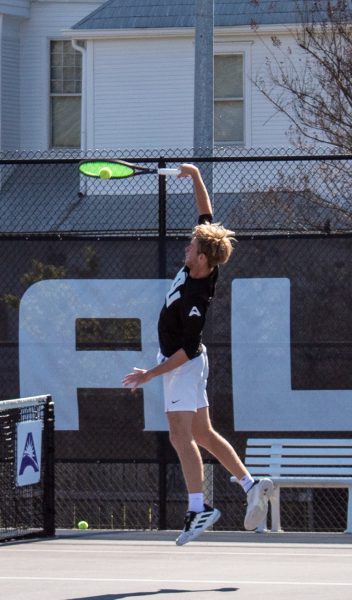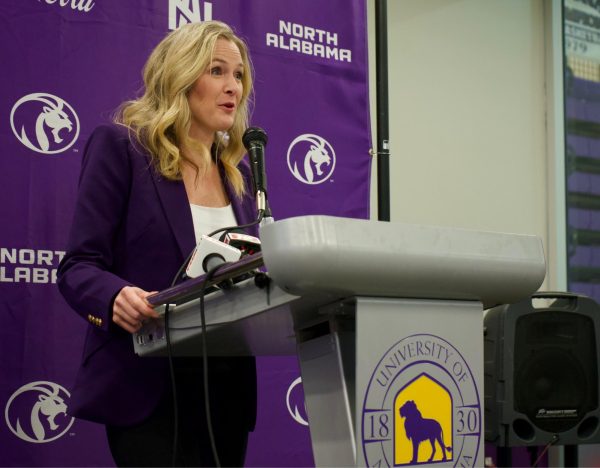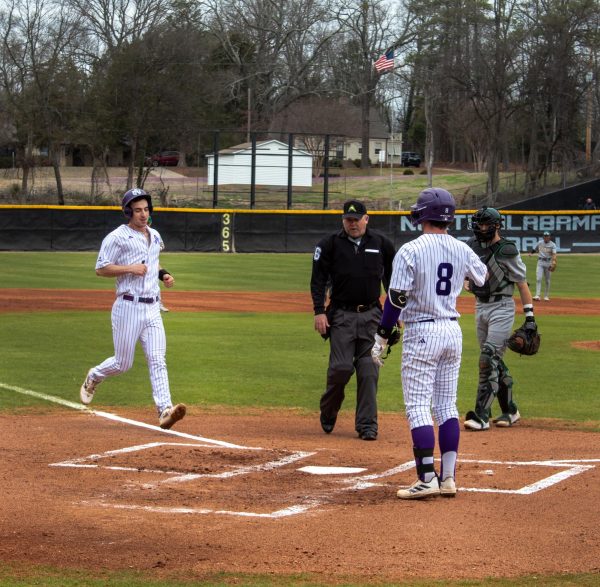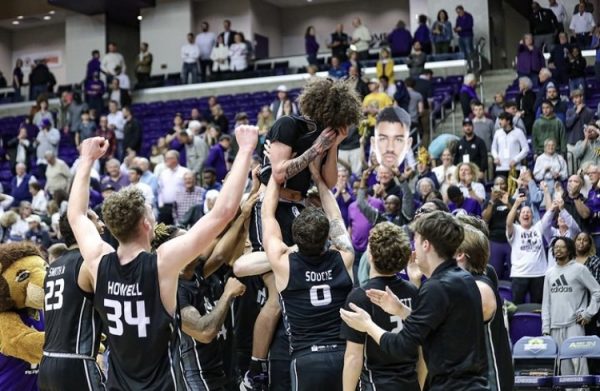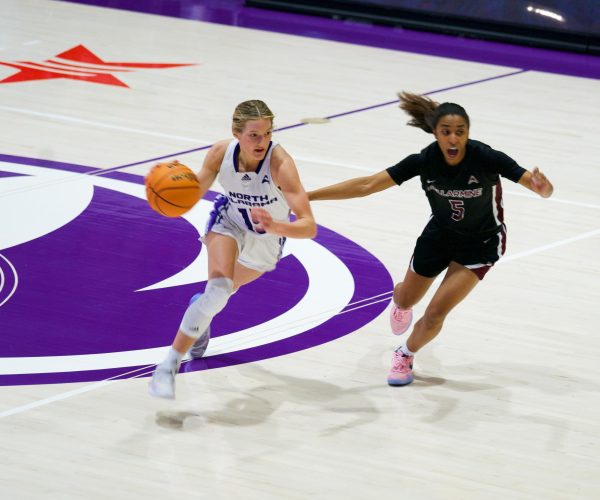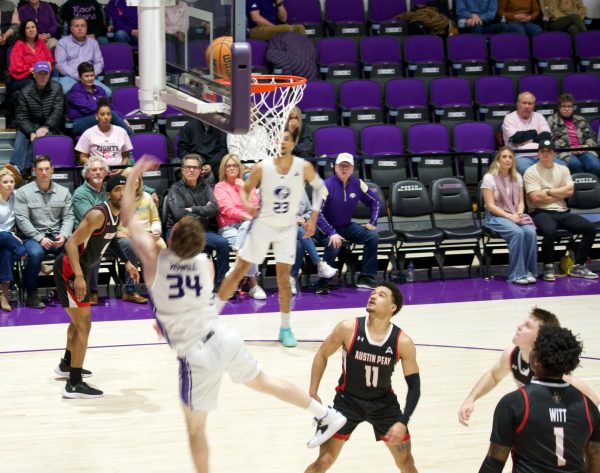High number of in-state college football signees benefits UNA
November 6, 2014
The state of Alabama has received plenty of attention over the last five years thanks to the high level of football play from both the University of Alabama and Auburn University.
The two schools competed in the last five NCAA D-I National Championship games and won four. The success of the two schools should come as no surprise considering the state of Alabama produced the most D-I signees per capita from 2007-2014, according to recruiting.scout.com.
Football head coach Bobby Wallace said the great high school talent in the state of Alabama has helped UNA in recruiting.
“It’s a trickling down effect,” he said. “The D-I gets their guys and if more guys are going D-I, then that means more are going to FCS and then there are more available for D-II. There is no question that we have guys that can play anywhere in the country.”
Athletic Director Mark Linder said football is definitely part of the culture in Alabama.
“I haven’t read the report, but it doesn’t surprise me,” he said. “Alabama is well-known in the region and in the nation for its love for the game of football. That’s nothing new.
“I was born in Alabama, lived here for 16 years and then went to Nebraska to finish my high school career. They have a love for the sport of football, but here there is just a different passion for the game.”
Wallace said the significance of football is a reason why so many high school players receive college scholarships.
“The emphasis and importance of high school football (in Alabama) has helped create the situation of a high amount of signees,” he said. “Not only are the coaches trained well, but there’s also a lot of money put into high school programs. You can see that in the facilities of Florence, Muscle Shoals and Russellville.”
Wallace said the importance of high school football in the South compared to the North is the main reason there are more people signing D-I scholarships per capita.
“High school and college football is important to the people in towns across the South,” he said. “Whereas up North, the NFL rules.”
Wallace experienced the difference between the importance of college football and pro sports firsthand when he coached at Temple University in Philadelphia from 1998-2005.
“The Philadelphia newspaper would have an article about Penn Sate every Sunday after a game during the season, Sunday after the spring game and the day after signing day,” he said. “The Penn State article would be somewhere on the back page and the rest of the paper had something on the Philadelphia Fliers, Eagles, 76ers or Phillies everyday.
“All you have to do is pick up a paper in Alabama and everyday 365 days of the year there is something in there about Alabama and Auburn.”
Brooks High School football coach and former UNA player Jerry Hill has coached in Alabama for 31 years and said he has benefited from the great players in-state.
“I’ve been very fortunate to coach so many high level players that have gone on to play in college and to the NFL as well,” Hill said. “I’ve also played alongside and against so many great players in this state.
“And as you can see, Alabama and Auburn have dominated college football and most of their players are from the state of Alabama, too.”
UNA running back and Florence native Lamonte Thompson said Alabama is simply a football state and people are encouraged to play it at a young age.
“I’ve been playing football since I was six and the love of college football down here influenced me to play,” he said. “The love of football here can’t be matched by any other state.”
Lions quarterback and Tuscaloosa native Luke Wingo said he is not surprised to see the state of Alabama producing so many college players.
“I always hear from people outside the state say that Alabama has the best high school football,” he said. “It’s definitely part of the culture here and that’s why the competition is so high.”
Wallace said another possibility for so many D-I signees is because Alabama is a rural state.
“In big cities they have parks and basketball courts but not much room for playing football,” he said. “When I was at Temple there was a high school that had to practice on a patch of grass down the street that was 20 yards by 30 yards.”
Wallace said there are great athletes in the northeast, but they may choose to play another sport instead of football.
“There they may choose to play basketball or hockey instead,” he said. “Here, athletes are so influenced by the SEC they choose football.”



